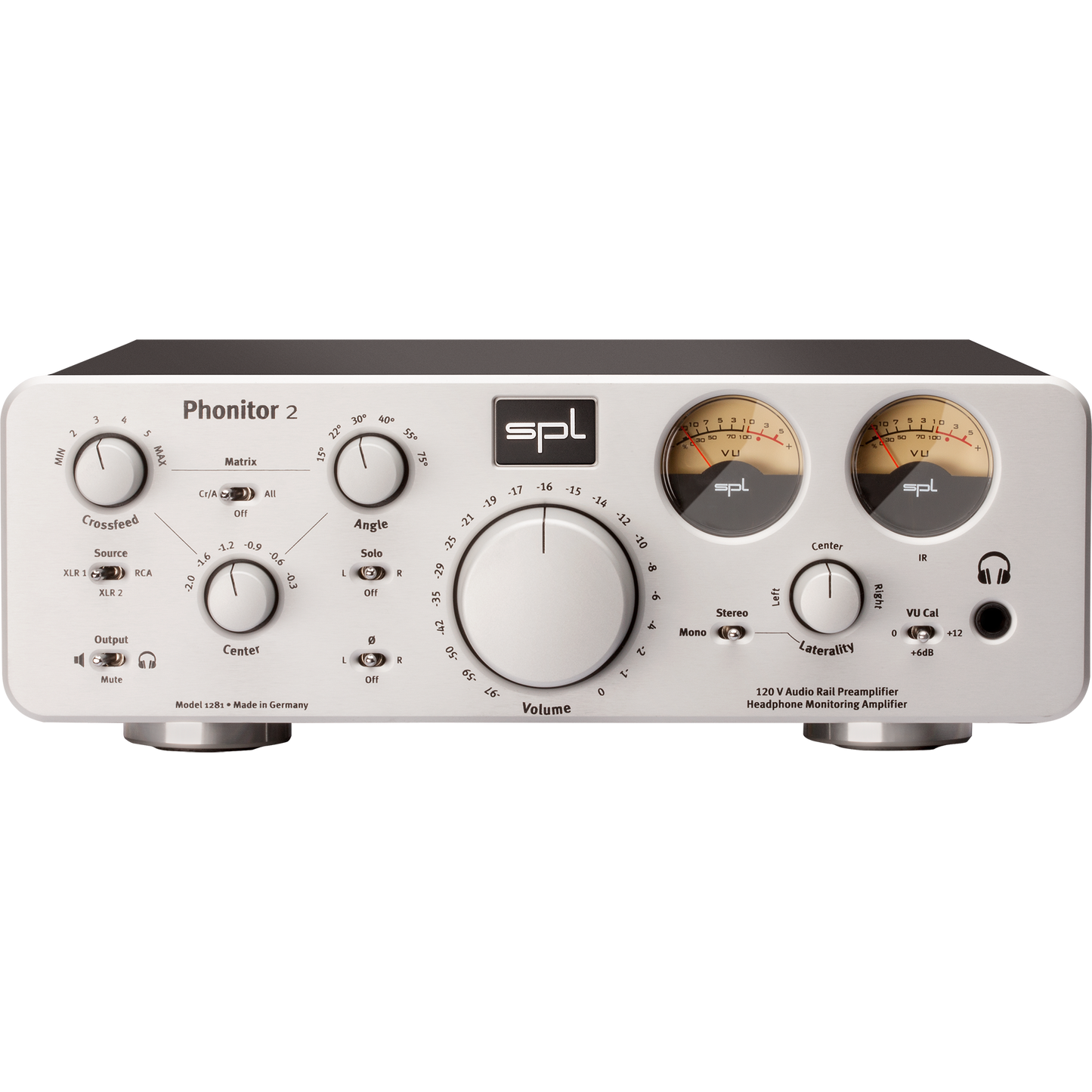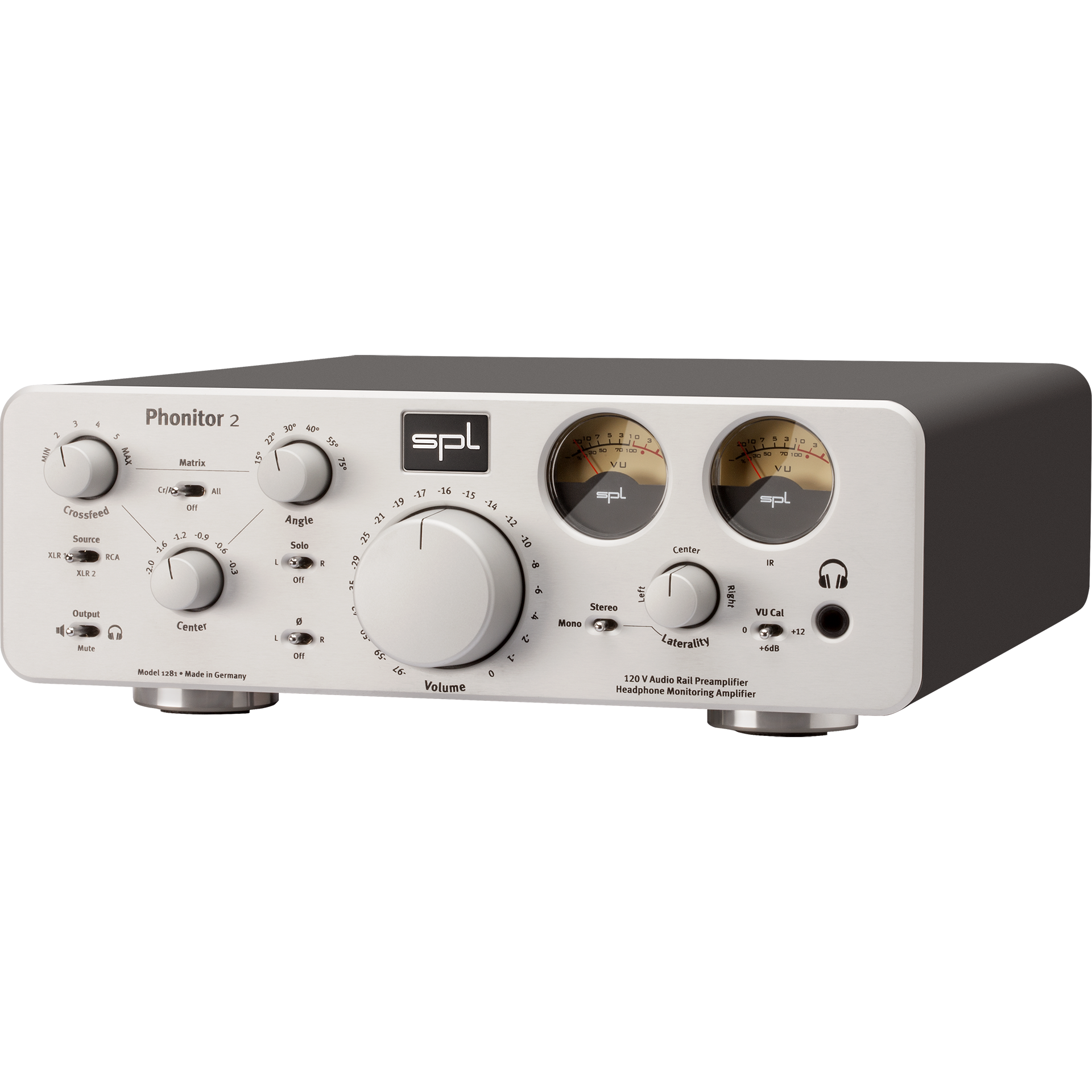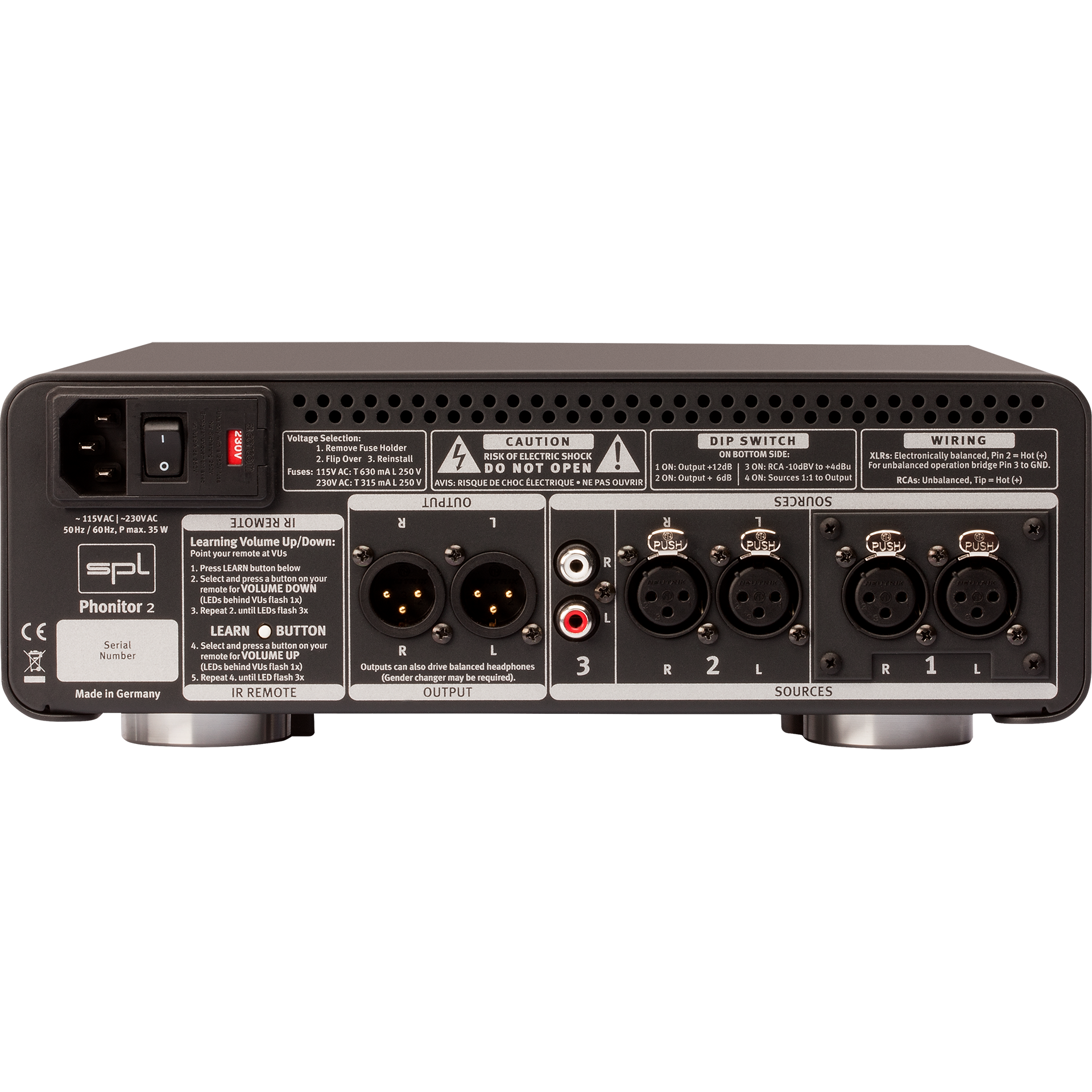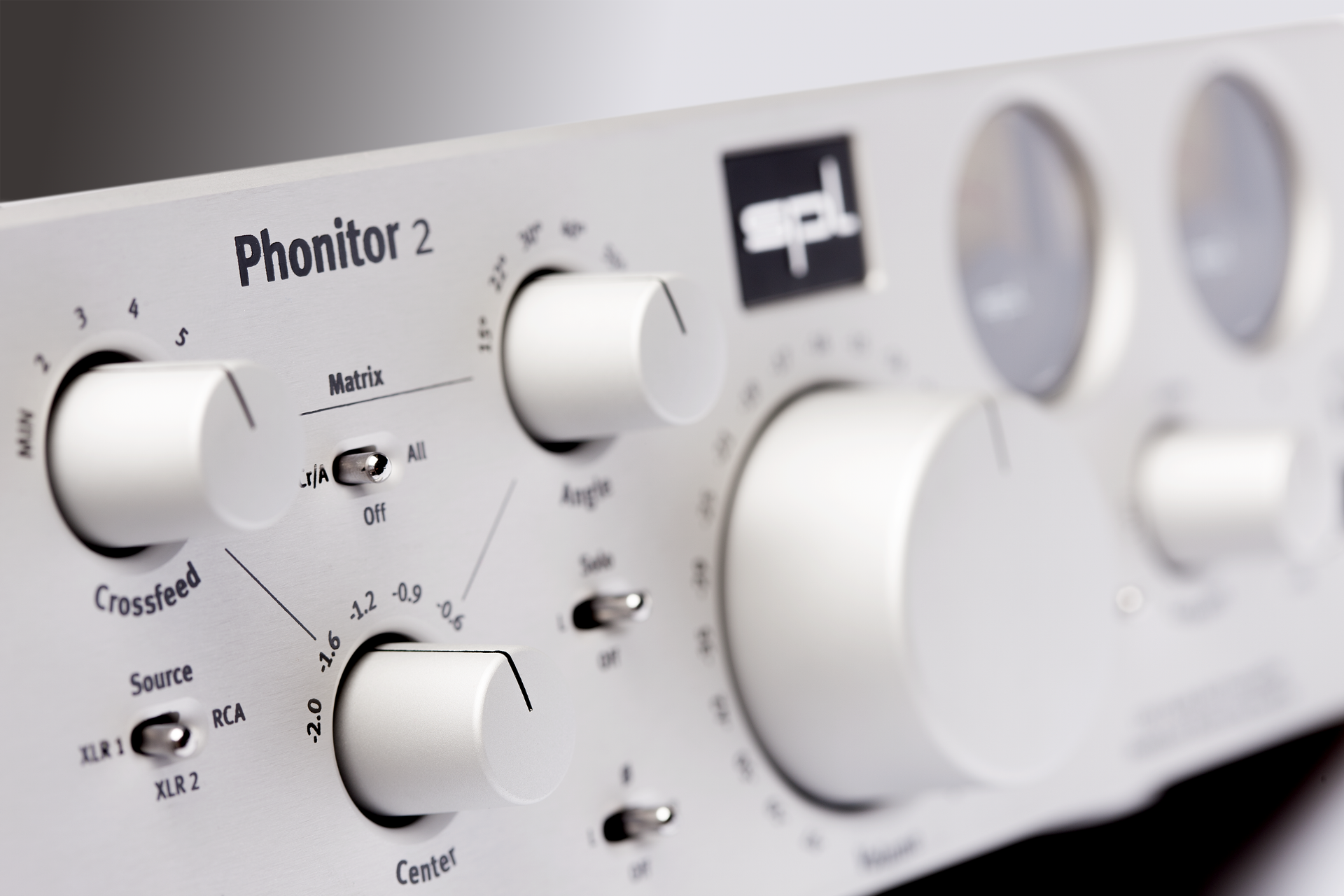






- Details
- Features
- Reviews
Why Headphones?
There is more than meets the eye in working with headphones. For example the modern audio production is often a decentralized process, maybe recording and track laying in one studio and mixing in another and as a result a production often take place in acoustically questionable rooms. In such circumstances, a mix might occur in an acoustically deficient ambiance (for example, in an extremely modal room), and employing headphones then begins to make sense when a successful mix would otherwise turn out to be impossible.
But another fact is that many musicians or producers might wish to – or be able to – mix at home (to say nothing of having to). Then the headphone becomes a clear must, enabling an evening or late night session that can only take place thanks to its being unhindered by the local acoustic environment.
All Advantages For Headphones
As many already know, there are clear advantages to monitoring and mixing with headphones, but there are also a couple of disadvantages. The main one being that it is very difficult (if not impossible) to accurately judge room ambience.
Therefore, several years ago SPL began planning the development of a compact, professional headphone amplifier design based on its 120 volt technology. The inspiration came from project manager Hermann Gier‘s desire to eliminate major disadvantages in working with headphones. It therefore meant transferring the essential ambient parameters of loudspeaker monitoring to headphone monitoring.
After several years of development and painstaking optimization, SPL have now introduced the Phonitor, whose name is a derivative of “Headphone“ and “Monitor“.
With and Without Magnifiers
The Phonitor encompasses the advantages of both kinds of monitoring methods: On one hand the analytical headphone monitoring is like working with an acoustic magnifier but without external room influences; on the other hand, as with loudspeaker monitoring, forgoing the microscopic effect, but with room ambiance.
Working with the magnifier effect on headphones has the advantage of safely hearing clicks or similar defects and helps in fine tuning crossfades or to judge tonal problems in individual tracks.
On loudspeakers such analysis is much more difficult, as such problems just are not as apparent as when working without being able to “zoom in” aurally.
Conversely, loudspeakers provide monitoring with the advantage of spatial balance in a (definable through placement) stereo width, which in turn provides the illusion of an acoustic stage.
Traditional headphone reproduction produces 180-degree stereo width in the middle of the head, and it is exactly this which creates the very problematic-to-impossible headphone mixing environment. An essential reason for such unnatural ambiance is the complete separation of the channels, which does not exist either in natural hearing or in stereo loudspeaker reproduction. This makes it nearly impossible to judge tonal balance, a stereo image and the phantom centre level. Panorama adjustments as well as related EQ settings that one attempts with headphones, typically just do not function on loudspeakers.
Moreover, what is often called the “super stereo effect” with headphones usually creates a great deal of ear fatigue in the long run. Over loudspeakers the sound stage is felt in front, while in contrast, when monitoring through headphones, the stage is present on the left and on the right – but frontal and rear information is lost.
The End Of Ear Fatigue
Aside from the unnatural headphone ambiance there are further disadvantages with fatigue when mixing or listening with headphones. First, some headphones can be very uncomfortable to wear...
Conventional headphone amplifiers can also be a contributing factor to premature ear fatigue. Almost without exception, present-day headphone amplifiers employ comparatively undemanding IC’s. In the best cases they might work with symmetrical voltages of +/-15V to +/-18V, and in less favorable cases, with only a simple supply of 9 or 12V from cheaper external “wall-wart“ power supplies. But the voltage level acts in circuitry much like the cubic inch capacity to the productive power of a combustion engine: Cubic inch capacity is replaceable with nothing but more cubic inch capacity – and in the productive power of electronics, voltage level functions similarly.
For some years, now, SPL has addressed this issue in with its mastering series of products through its own specifically developed 120 volt technology. Consoles and signal processors of the SPL Mastering Series appear as central elements in installations of today’s most renowned mastering houses (z. B. Bob Ludwig’s Gateway Mastering & DVD in the USA, Simon Heyworth’s Super Audio Mastering in Great Britain or the Galaxy Studios in Belgium).
This 120 volt technology is based on discrete operation amplifiers from SPL’s own production, developed and perfected over many years by SPL’s co-founder and chief developer, Wolfgang Neumann. These SUPRA OPs work with high-performance semiconductors in Class A technology at a symmetrical voltage of +/-60V.
In the Phonitor nine SUPRA OPs are employed. The SUPRA OPs have a Signal To Noise Ratio of 116dB and offer a nearly 34dB headroom – that yields an unequalled 150dB dynamic range.
The musical result cannot be mistaken: Regardless of the monitoring means, regardless of how loud you monitor – the Phonitor always remains a distant, impartial factor unaffected when used to capacity and beyond being overloaded.
The phase stability is always perfect and its THD is next to immeasurable. The Phonitor’s SUPRA OPs cannot be stressed even in the most stressful circumstances, and for precisely this reason its musical sound is always relaxed and spacious. All frequencies are reproduced in balance, basses are stable and tight, mids are clear and differentiated and highs remain transparent and soft.
Such supreme and heretofore unreachable neutrality in audio reproduction is the direct consequence of our technical approach and basis in 120 volt technology: Possible disturbances from such as noise or distortion are so slight that we even arrive at the boundaries of the best measuring equipment, and what remains is quite simply unaltered musical sound.
Phonitoring.
Audio
Frequency Response: ‹10Hz to ›200kHz (-3dB)
CMR:-80dBu (@1kHz, 0dBu input level and unity gain)
Crosstalk: -67dB (@1kHz)
THD: 0,005% (@ 1kHz, 0dBu input level and unity gain)
Noise: -97dBu (A-weighted)
Dynamic Range: 129,5dB (@ 600 Ohms Impedance)
Inputs
(XLR connections, electronically balanced)
Impedance: ca. 20 Ohms balanced/ca. 10 Ohms unbalanced
Maximum Input Level: +24dBu
Outputs
XLR Connections: Input thru, electronically balanced
Headphone Output: 6,3 mm stereo TRS connection
Pin Wiring Tip = left, Ring = right, Shaft = GND, Impedance: 9 Ohms
Power Amplifier
Max. Output Performance:
1,7W (+32,2dBm) @ 1 kHz and 600 Ohms connection
360mW (+25,6dBm) @ 1 kHz and 30 Ohms connection
Display Elements
VU Meter: Input levels from -20dB to +5dB
Signal LED: Input signals from -22dBu
Overload LED: Displays input overload from +21dBu
Power Supply
Voltages: 230V AC, 50Hz/120V AC, 60Hz
Power Consumption: max 23,7VA
Fuses (slow blow): 200-240V AC: 500mA/100-120V AC: 1A
Dimensions & Weight
H x W x D (mm): 106 x 216 x 393 (H w/o Feet 88mm/2U)
Weight: 4,05kg
0dBu = 0,775V. Subject to change without notice.
| Product Name | SPL Phonitor One Headphone Amplifier Model |
|---|---|
| Brand | SPL |
| Condition | New |
| MPN | PHONITOR |
| UPC | 4260149322395 |
| Shipping Option | Free Shipping to the Continental U.S. |
Audio
- Frequency Response: ‹10Hz to ›200kHz (-3dB)
- CMR:-80dBu (@1kHz, 0dBu input level and unity gain)
- Crosstalk: -67dB (@1kHz)
- THD: 0,005% (@ 1kHz, 0dBu input level and unity gain)
- Noise: -97dBu (A-weighted)
- Dynamic Range: 129,5dB (@ 600 Ohms Impedance)
Inputs
- (XLR connections, electronically balanced)
- Impedance: ca. 20 Ohms balanced/ca. 10 Ohms unbalanced
- Maximum Input Level: +24dBu
Outputs
- XLR Connections: Input thru, electronically balanced
- Headphone Output: 6,3 mm stereo TRS connection
- Pin Wiring Tip = left, Ring = right, Shaft = GND, Impedance: 9 Ohms
Power Amplifier
- Max. Output Performance:
- 1,7W (+32,2dBm) @ 1 kHz and 600 Ohms connection
- 360mW (+25,6dBm) @ 1 kHz and 30 Ohms connection
Display Elements
- VU Meter: Input levels from -20dB to +5dB
- Signal LED: Input signals from -22dBu
- Overload LED: Displays input overload from +21dBu
Power Supply
- Voltages: 230V AC, 50Hz/120V AC, 60Hz
- Power Consumption: max 23,7VA
- Fuses (slow blow): 200-240V AC: 500mA/100-120V AC: 1A
Dimensions & Weight
- H x W x D (mm): 106 x 216 x 393 (H w/o Feet 88mm/2U)
- Weight: 4,05kg
- 0dBu = 0,775V. Subject to change without notice.
SPL Phonitor One Headphone Amplifier Model
Why Headphones?
There is more than meets the eye in working with headphones. For example the modern audio production is often a decentralized process, maybe recording and track laying in one studio and mixing in another and as a result a production often take place in acoustically questionable rooms. In such circumstances, a mix might occur in an acoustically deficient ambiance (for example, in an extremely modal room), and employing headphones then begins to make sense when a successful mix would otherwise turn out to be impossible.
But another fact is that many musicians or producers might wish to – or be able to – mix at home (to say nothing of having to). Then the headphone becomes a clear must, enabling an evening or late night session that can only take place thanks to its being unhindered by the local acoustic environment.
All Advantages For Headphones
As many already know, there are clear advantages to monitoring and mixing with headphones, but there are also a couple of disadvantages. The main one being that it is very difficult (if not impossible) to accurately judge room ambience.
Therefore, several years ago SPL began planning the development of a compact, professional headphone amplifier design based on its 120 volt technology. The inspiration came from project manager Hermann Gier‘s desire to eliminate major disadvantages in working with headphones. It therefore meant transferring the essential ambient parameters of loudspeaker monitoring to headphone monitoring.
After several years of development and painstaking optimization, SPL have now introduced the Phonitor, whose name is a derivative of “Headphone“ and “Monitor“.
With and Without Magnifiers
The Phonitor encompasses the advantages of both kinds of monitoring methods: On one hand the analytical headphone monitoring is like working with an acoustic magnifier but without external room influences; on the other hand, as with loudspeaker monitoring, forgoing the microscopic effect, but with room ambiance.
Working with the magnifier effect on headphones has the advantage of safely hearing clicks or similar defects and helps in fine tuning crossfades or to judge tonal problems in individual tracks.
On loudspeakers such analysis is much more difficult, as such problems just are not as apparent as when working without being able to “zoom in” aurally.
Conversely, loudspeakers provide monitoring with the advantage of spatial balance in a (definable through placement) stereo width, which in turn provides the illusion of an acoustic stage.
Traditional headphone reproduction produces 180-degree stereo width in the middle of the head, and it is exactly this which creates the very problematic-to-impossible headphone mixing environment. An essential reason for such unnatural ambiance is the complete separation of the channels, which does not exist either in natural hearing or in stereo loudspeaker reproduction. This makes it nearly impossible to judge tonal balance, a stereo image and the phantom centre level. Panorama adjustments as well as related EQ settings that one attempts with headphones, typically just do not function on loudspeakers.
Moreover, what is often called the “super stereo effect” with headphones usually creates a great deal of ear fatigue in the long run. Over loudspeakers the sound stage is felt in front, while in contrast, when monitoring through headphones, the stage is present on the left and on the right – but frontal and rear information is lost.
The End Of Ear Fatigue
Aside from the unnatural headphone ambiance there are further disadvantages with fatigue when mixing or listening with headphones. First, some headphones can be very uncomfortable to wear...
Conventional headphone amplifiers can also be a contributing factor to premature ear fatigue. Almost without exception, present-day headphone amplifiers employ comparatively undemanding IC’s. In the best cases they might work with symmetrical voltages of +/-15V to +/-18V, and in less favorable cases, with only a simple supply of 9 or 12V from cheaper external “wall-wart“ power supplies. But the voltage level acts in circuitry much like the cubic inch capacity to the productive power of a combustion engine: Cubic inch capacity is replaceable with nothing but more cubic inch capacity – and in the productive power of electronics, voltage level functions similarly.
For some years, now, SPL has addressed this issue in with its mastering series of products through its own specifically developed 120 volt technology. Consoles and signal processors of the SPL Mastering Series appear as central elements in installations of today’s most renowned mastering houses (z. B. Bob Ludwig’s Gateway Mastering & DVD in the USA, Simon Heyworth’s Super Audio Mastering in Great Britain or the Galaxy Studios in Belgium).
This 120 volt technology is based on discrete operation amplifiers from SPL’s own production, developed and perfected over many years by SPL’s co-founder and chief developer, Wolfgang Neumann. These SUPRA OPs work with high-performance semiconductors in Class A technology at a symmetrical voltage of +/-60V.
In the Phonitor nine SUPRA OPs are employed. The SUPRA OPs have a Signal To Noise Ratio of 116dB and offer a nearly 34dB headroom – that yields an unequalled 150dB dynamic range.
The musical result cannot be mistaken: Regardless of the monitoring means, regardless of how loud you monitor – the Phonitor always remains a distant, impartial factor unaffected when used to capacity and beyond being overloaded.
The phase stability is always perfect and its THD is next to immeasurable. The Phonitor’s SUPRA OPs cannot be stressed even in the most stressful circumstances, and for precisely this reason its musical sound is always relaxed and spacious. All frequencies are reproduced in balance, basses are stable and tight, mids are clear and differentiated and highs remain transparent and soft.
Such supreme and heretofore unreachable neutrality in audio reproduction is the direct consequence of our technical approach and basis in 120 volt technology: Possible disturbances from such as noise or distortion are so slight that we even arrive at the boundaries of the best measuring equipment, and what remains is quite simply unaltered musical sound.
Phonitoring.
Audio
Frequency Response: ‹10Hz to ›200kHz (-3dB)
CMR:-80dBu (@1kHz, 0dBu input level and unity gain)
Crosstalk: -67dB (@1kHz)
THD: 0,005% (@ 1kHz, 0dBu input level and unity gain)
Noise: -97dBu (A-weighted)
Dynamic Range: 129,5dB (@ 600 Ohms Impedance)
Inputs
(XLR connections, electronically balanced)
Impedance: ca. 20 Ohms balanced/ca. 10 Ohms unbalanced
Maximum Input Level: +24dBu
Outputs
XLR Connections: Input thru, electronically balanced
Headphone Output: 6,3 mm stereo TRS connection
Pin Wiring Tip = left, Ring = right, Shaft = GND, Impedance: 9 Ohms
Power Amplifier
Max. Output Performance:
1,7W (+32,2dBm) @ 1 kHz and 600 Ohms connection
360mW (+25,6dBm) @ 1 kHz and 30 Ohms connection
Display Elements
VU Meter: Input levels from -20dB to +5dB
Signal LED: Input signals from -22dBu
Overload LED: Displays input overload from +21dBu
Power Supply
Voltages: 230V AC, 50Hz/120V AC, 60Hz
Power Consumption: max 23,7VA
Fuses (slow blow): 200-240V AC: 500mA/100-120V AC: 1A
Dimensions & Weight
H x W x D (mm): 106 x 216 x 393 (H w/o Feet 88mm/2U)
Weight: 4,05kg
0dBu = 0,775V. Subject to change without notice.
| Product Name | SPL Phonitor One Headphone Amplifier Model |
|---|---|
| Brand | SPL |
| Condition | New |
| MPN | PHONITOR |
| UPC | 4260149322395 |
| Shipping Option | Free Shipping to the Continental U.S. |
Audio
- Frequency Response: ‹10Hz to ›200kHz (-3dB)
- CMR:-80dBu (@1kHz, 0dBu input level and unity gain)
- Crosstalk: -67dB (@1kHz)
- THD: 0,005% (@ 1kHz, 0dBu input level and unity gain)
- Noise: -97dBu (A-weighted)
- Dynamic Range: 129,5dB (@ 600 Ohms Impedance)
Inputs
- (XLR connections, electronically balanced)
- Impedance: ca. 20 Ohms balanced/ca. 10 Ohms unbalanced
- Maximum Input Level: +24dBu
Outputs
- XLR Connections: Input thru, electronically balanced
- Headphone Output: 6,3 mm stereo TRS connection
- Pin Wiring Tip = left, Ring = right, Shaft = GND, Impedance: 9 Ohms
Power Amplifier
- Max. Output Performance:
- 1,7W (+32,2dBm) @ 1 kHz and 600 Ohms connection
- 360mW (+25,6dBm) @ 1 kHz and 30 Ohms connection
Display Elements
- VU Meter: Input levels from -20dB to +5dB
- Signal LED: Input signals from -22dBu
- Overload LED: Displays input overload from +21dBu
Power Supply
- Voltages: 230V AC, 50Hz/120V AC, 60Hz
- Power Consumption: max 23,7VA
- Fuses (slow blow): 200-240V AC: 500mA/100-120V AC: 1A
Dimensions & Weight
- H x W x D (mm): 106 x 216 x 393 (H w/o Feet 88mm/2U)
- Weight: 4,05kg
- 0dBu = 0,775V. Subject to change without notice.
- Choosing a selection results in a full page refresh.
- Opens in a new window.






